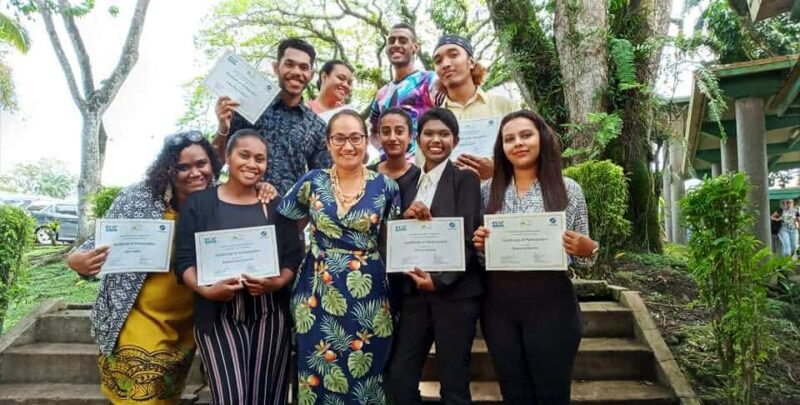The University of the South Pacific’s Journalism Programme, with support from Internews’ Earth Journalism Network (EJN), brought together in late September around 25 journalism students and members of the mainstream media to learn more about environmental issues and how to report on them.
“The Pacific faces numerous environmental challenges of a serious nature but lacks dedicated environment reporters [to cover them],” said USP’s Journalism Programme Coordinator, Dr. Shailendra Singh. “The workshop helped address that shortcoming, at least to some extent.”
With presentations by environmental advocates, academics and researchers from around the Pacific, the workshop focused on the causes and effects of pollution in the Suva Bay and discussed possible solutions.
First year journalism student, Sera Tikoitikoivaru-Sefeti said she appreciated the opportunity to learn more about being an environmental journalist, a field she described as “desperately needed” in the Pacific.
“I’m now aware that our ocean and the Suva foreshore is home to some rare birds and home to different species of sea slugs,” Tikoitikoivaru-Sefeti said.
Her classmate, 19-year-old Patrick Lestro, said the workshop exceeded his expectations: “I really learnt a lot in terms of environmental issues and, at the same time, how to grasp these issues and create news stories.”
In addition to being more aware of environmental issues in the region, Tikoitikoivaru-Sefeti said she’s more driven to share the information she discovered.
“From this workshop, I’m now inspired to start a group that would bring some of these issues to light such as the harmful effects of microplastics in the environment, and work with experts from the workshop to deliver the message to the public,” she explained.
Stories from the workshop are now being finalised by students and will be published in the student newspaper, Wansolwara. Stories will also be shared with EJN and other Pacific media outlets.
